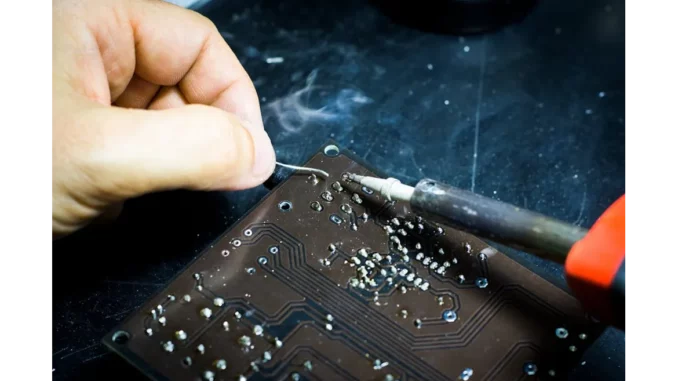
The micromachining market is soaring to new heights, with projections indicating it will reach a staggering $18.5 billion by 2032. This anticipated rise, marked by a compound annual growth rate (CAGR) of 8.64% from 2024 to 2032, is driven by an escalating demand for precision and miniaturisation across multiple industries. This article delves into the factors propelling the expansion of the micromachining market, the challenges it faces, and the myriad opportunities it presents for innovation and advancement in the manufacturing sector.
Micromachining is a pivotal manufacturing process that produces minuscule components with unparalleled precision. Its significance is most pronounced in industries requiring intricate patterns, holes, and structures on a microscopic scale. The adaptability and precision offered by micromachining render it indispensable in sectors such as electronics, automotive, aerospace, and medical devices. Its ability to produce highly detailed components is crucial for the advancement of these industries, which are increasingly demanding smaller and more efficient parts to maintain their competitive edge.
Several key drivers are fuelling the rapid growth of the micromachining market. The electronics industry, for instance, is experiencing a surge in demand for compact and portable devices such as smartphones, wearables, and Internet of Things (IoT) gadgets. As these industries strive to create smaller, lighter, and more efficient components, micromachining offers the precision and dependability needed to fulfil such demands. Furthermore, the healthcare sector has embraced micromachining to manufacture components like stents, surgical tools, and microfluidic devices. The growing focus on minimally invasive surgical procedures and personalised medicine has heightened the need for precise medical instruments, making micromachining an invaluable asset. In the automotive industry, micromachined components are increasingly used in advanced driver-assistance systems (ADAS), sensors, and fuel injectors, particularly as the shift towards electric vehicles (EVs) necessitates precision parts for optimal performance. Lastly, as industries move towards greater automation, robots equipped with sensors and actuators produced through micromachining are becoming essential, ensuring high accuracy in automated processes and enhancing operational efficiency.
Despite its promising trajectory, the micromachining market faces several challenges. High initial costs can deter small and medium-sized enterprises, as the advanced equipment and technology required entail significant upfront investment. Moreover, a shortage of skilled technicians in certain regions impedes market expansion, as operating micromachining tools and processes requires specialised training. However, these challenges also present opportunities for growth and innovation. The integration of Artificial Intelligence (AI) and automation into micromachining processes holds the potential to optimise efficiency and reduce processing times. Additionally, the exploration of untapped markets, such as renewable energy and nanotechnology, offers new growth avenues, as these sectors increasingly require precision components.
The growth and adoption of micromachining also exhibit regional variations. North America leads the market, bolstered by advanced manufacturing facilities and substantial research and development investments. Europe is witnessing considerable growth, driven by its robust automotive and aerospace industries. Meanwhile, the Asia-Pacific region is experiencing rapid industrialisation alongside a burgeoning electronics sector, placing it as a key player in the global micromachining market. These regional dynamics highlight the varying levels of market maturity and the diverse opportunities present across the globe.
The future of micromachining appears exceptionally promising, with ongoing innovations aimed at enhancing speed, reducing costs, and improving material compatibility. As industries continue to innovate and demand precise and efficient production methods, the role of micromachining as a critical manufacturing process is set to become even more pronounced. By tackling existing challenges and capitalising on emerging opportunities, the micromachining market is well-positioned for sustained growth. This growth not only drives technological advancements but also transforms industries on a global scale.
The micromachining market’s robust growth trajectory underscores its pivotal role as a transformative force across numerous sectors. As technology continues to evolve, micromachining is set to play an increasingly vital role in shaping the future of precision manufacturing. It enables industries to achieve unprecedented levels of efficiency, innovation, and success, solidifying its status as the backbone of modern manufacturing.


Be the first to comment